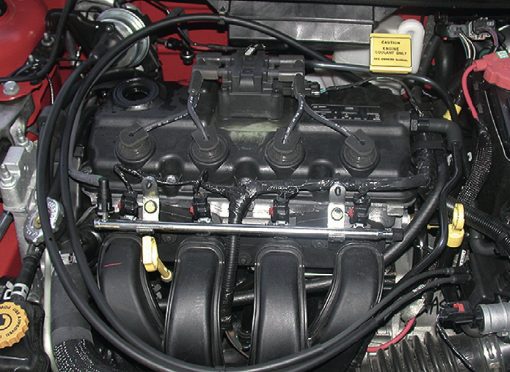In modern automobiles, distributorless ignition coils are becoming increasingly common. In this blog post, we will discuss the basics of a distributorless ignition coil, its advantages, and its position in an automobile.
What is a Distributorless Ignition Coil?
A distributorless ignition coil is an electrical component that is used to generate the high-voltage current required to ignite the fuel in an automobile’s engine. In a conventional ignition system, a distributor is used to deliver electrical power to the spark plugs, which then ignite the fuel in the engine. However, in a distributorless ignition system, each cylinder has its own ignition coil, which is controlled by the car’s electronic control unit (ECU).
Advantages of Distributorless Ignition Coils
There are several advantages to using a distributorless ignition coil system. First, since each cylinder has its own ignition coil, there is no need for a distributor. This simplifies the ignition system, reduces the number of moving parts, and improves reliability. Second, since each ignition coil is controlled by the car’s ECU, the timing and duration of the spark can be more precisely controlled, resulting in improved engine performance and fuel efficiency. Finally, since the spark plugs are fired directly by the ignition coil, there is less electrical resistance, which can lead to a more powerful spark and better combustion.
Position of Distributorless Ignition Coils
In most automobiles with a distributorless ignition coil system, the coils are located directly above each cylinder. This allows for a shorter electrical path between the ignition coil and the spark plug, which reduces electrical resistance and increases the strength of the spark. In some cars, the ignition coils are located in a central location, with wires running to each cylinder. However, this design can result in longer electrical paths, which can reduce the strength of the spark.
Maintenance of Distributorless Ignition Coils
Like any other component in an automobile, distributorless ignition coils require regular maintenance to ensure proper function. The most common issue with these coils is failure due to heat damage. Over time, the coils can become overheated and damaged, which can cause a weak spark or no spark at all. Regular inspection and replacement of worn or damaged ignition coils can help to prevent this problem.
Conclusion
Distributorless ignition coils are becoming increasingly common in modern automobiles, thanks to their simplicity, reliability, and improved engine performance. By eliminating the distributor and allowing for more precise control of the spark, these coils provide a more efficient and powerful ignition system. If you are experiencing issues with your car’s ignition system, it may be worth considering a distributorless ignition coil system as a replacement.

Distributorless ignition systems rely on a combination of sensors and the car’s ECU to determine the timing and duration of the spark required for each cylinder. The ECU receives information from various sensors, such as the crankshaft position sensor, camshaft position sensor, and throttle position sensor, to determine the engine’s operating conditions. Based on this information, the ECU calculates the ideal time to fire each spark plug and sends a signal to the appropriate ignition coil.
Each ignition coil contains two sets of windings: the primary winding and the secondary winding. When the ECU sends a signal to the ignition coil, it causes a current to flow through the primary winding, which generates a magnetic field around the coil. When the ECU sends a signal to fire the spark plug, it interrupts the current flow in the primary winding, which causes the magnetic field to collapse. This collapsing magnetic field induces a voltage in the secondary winding, which is much higher than the original voltage in the primary winding. This high voltage is then sent to the spark plug, which ignites the fuel in the cylinder.
One of the main advantages of distributorless ignition coils is their ability to provide more precise control over the timing and duration of the spark. Since each cylinder has its own ignition coil, the ECU can adjust the spark timing for each cylinder independently, based on the engine’s operating conditions. This allows for more efficient combustion and better engine performance.
Another advantage of distributorless ignition coils is their improved reliability. Traditional distributor systems rely on a single distributor to distribute electrical power to the spark plugs. This distributor contains moving parts that can wear out over time and require maintenance. In contrast, distributorless ignition coils eliminate the need for a distributor, which reduces the number of moving parts and improves reliability.
Finally, distributorless ignition coils provide a more powerful spark than traditional ignition systems. Since the spark plugs are fired directly by the ignition coil, there is less electrical resistance, which can result in a stronger spark and better combustion.
In summary, distributorless ignition coils are a modern alternative to traditional ignition systems that offer improved engine performance, reliability, and efficiency. Their design eliminates the need for a distributor and allows for more precise control over the spark timing and duration, resulting in better combustion and improved fuel economy.




